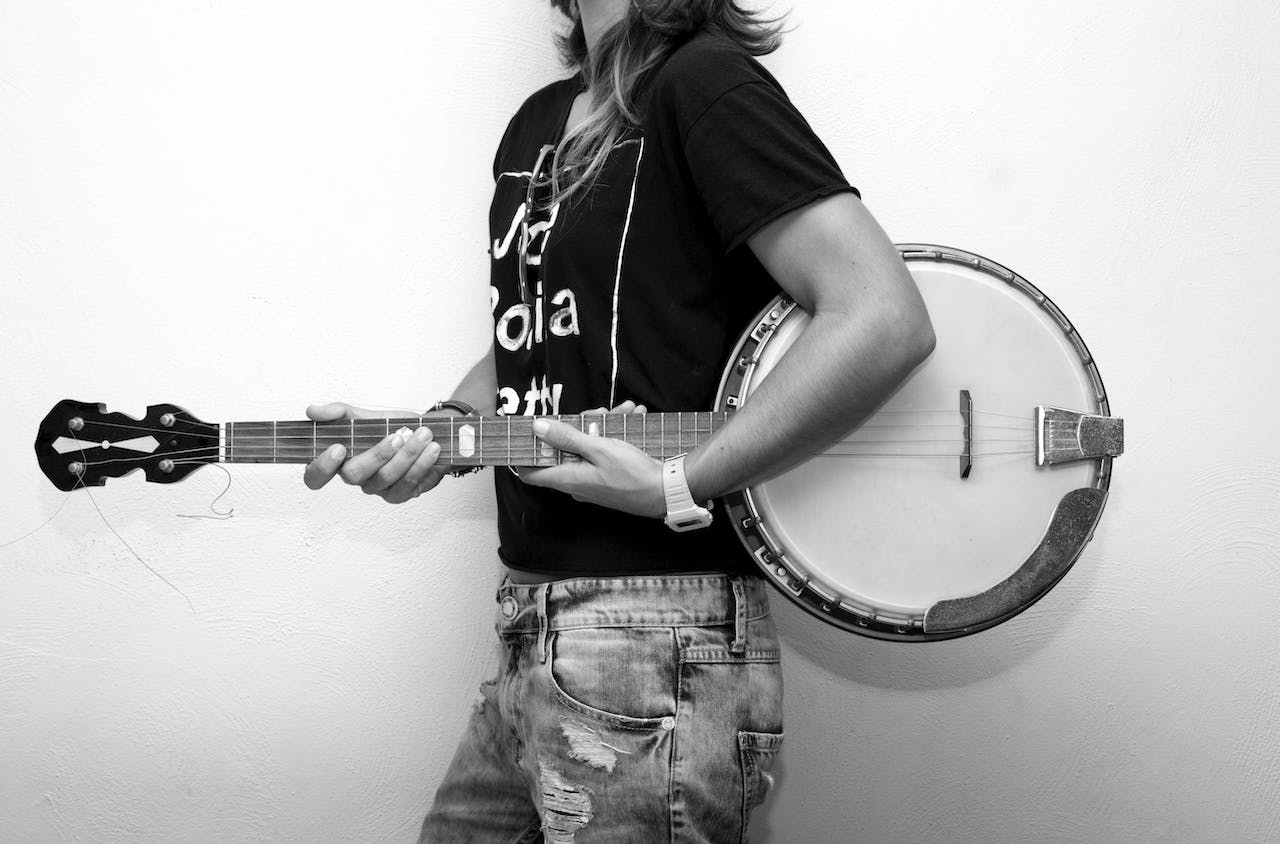The banjo is a string-plucked musical instrument with an acoustic case in the form of a small drum, as well as an elongated neck with vein strings, from 4 to 9. Usually we meet him in such musical styles as jazz, bluegrass and country. Being a “descendant” of ancient Arab instruments, the banjo is gradually gaining ground in the western regions of the African continent, and in the 17th century, along with the beginning of massive slave migrations of the population to the countries of the New World, it is mainly in the southern US states, where it is gaining enviable popularity. It is worth noting that the banjo is also credited with being related to the European mandolin – both instruments, in fact, have many parallels.
The resonator guitar, known as the banjo, banger, or bonja, originally had a flat, open lowercase with one leather membrane and an elongated fretboard. The number of strings, as already noted, ranged from 4 to 9. The sound of the instrument was distinguished by sharpness, sharpness and fast attenuation with the effect of rustling. In this review, we will draw your attention to the most important points that will help you choose the right musical instrument for you to get real pleasure from music and at the same time avoid overpaying.
Body
Two materials that are firmly rooted in the tradition of making the banjo body are mahogany and maple. Maple gives the sound of the instrument brightness. As for mahogany, this breed has a softer sound, with prevailing mid frequencies. However, the decisive influence on the timbre is nevertheless exerted not by the material of the case, but by the steel ring (“tonering”), which serves as a support for the “head” made of plastic (more rarely, leather).
You may encounter 2 types of such rings: “flattop” (plastic is stretched at the same level as the rim) and “archtop” (plastic is raised above the level of the rim). The first type will be inferior to the second in sound brightness. Therefore, if you are a fan of Irish music, you will most likely make your choice in favor of archtop.
Strings
As a material for the manufacture of banjo strings, metal is best suited, although plastic is also sometimes preferred. In order to achieve a more sonorous and sharp sound, special windings are used: steel and alloys of various non-ferrous metals. The banjo has its own peculiar sound, which gives the listener the impression that the strings touch some invisible “hindrance”, and it makes them rattle. It turns out that not only does this not bother many musicians, but they even intentionally seek to amplify and emphasize such an original “canning” sound.
Plastics
Often preference is given to thin plastic (without spraying or transparent). If you want to get a softer sound on a loud instrument, you should pay attention to thicker plastics – with spraying or imitation of genuine leather (“Fiberskin” or “RemoRenaissance”). Today, the standard diameter of the plastic is considered an 11-inch size.
Types of Banjo
The original American banjo has 5 strings (it is known as “Bluegrass”). Its shortened appearance, the bass string is on the “G” and constantly left open.
If the banjo does not have a fifth shortened string, then we are dealing with the most classic 4-string banjo: C, G, D, A.
The least troublesome musical instrument is the 6-string banjo. He has the same system as the guitar. Actually, from here a logical name was born and attached – a banjo guitar.
The banjolele, a rather curious musical instrument that combines both a ukulele and a banjo, can cause particular interest in a musician who is in search. And if you count as many as 8 strings on the instrument, and 4 of them will be doubled – it means that you are lucky to get acquainted with nothing other than a banjo mandolin.
Banjo buying guide
- If you are considering buying a banjo, it is important to understand: what is this tool and how to use it in the future. For all its similarities to a guitar, a banjo is suitable for playing far from any repertoire. Mostly – folk songs, dixieland and bluegrass. On it you can play solo and take part in group performances. In this case 5 string banjo is considered as the best beginner banjo.
- When buying a banjo, look not only at the price, but also consider your musical performance. If your musical abilities leave much to be desired, we recommend that you opt for a banjo for beginners. Such a tool will cost you quite a budget. If you are well acquainted with playing the stringed instruments, you understand a lot about quality – then do not deny yourself the pleasure of investing in an expensive banjo from well-known brands.
- You can choose a 5-string banjo with an elongated neck and simple strings. It is the best suited for bluegrass.
- If you choose the 4-string version, you will get an instrument with a shorter fretboard, perfect for jazz.
- A 6-string banjo (the so-called banjo guitar) is perfect for a guitarist who has not fully mastered all the principles of playing the banjo.
If you are beginner and looking for the best banjo for you then this article seems really helpful for you. Keep doing your best with your first banjo.

